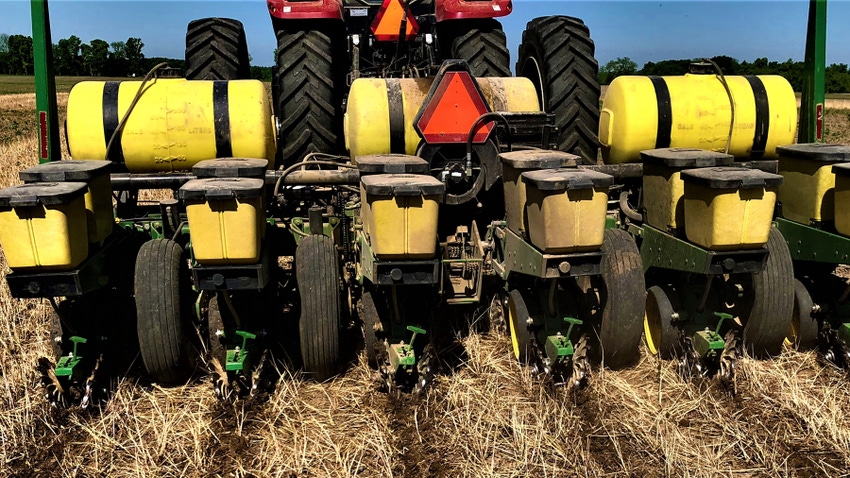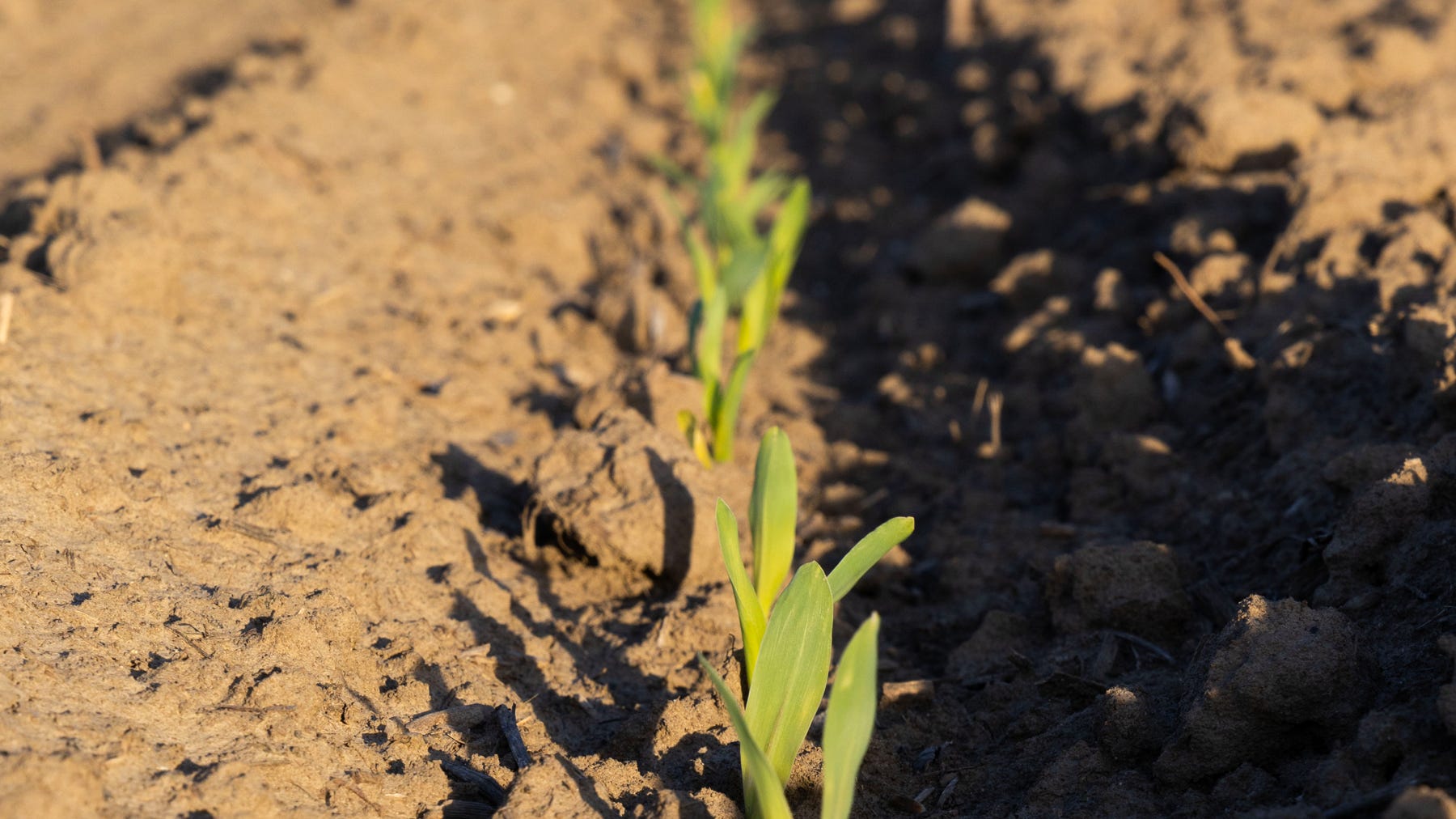January 31, 2024

by Richard Roth
Understanding corn's early nutrient demands is crucial to unlocking its full potential. Starter fertilizer provides young plants with essential nutrients to meet these demands and promote optimal growth and development.
Starter fertilizer applied at planting supplies a concentrated source of essential elements to young plants when most susceptible to nutrient deficiency. This early nutrient boost promotes robust root development, early vigor and overall crop health while establishing a foundation for enhanced productivity and economic viability.
Choosing the right starter fertilizer for corn requires evaluating:
soil nutrient levels
crop nutrient requirements
potential nutrient interactions
Key nutrients
A comprehensive approach helps achieve optimal growth and maximum yield potential. Key nutrients for corn starter fertilizer include:
Nitrogen. It aids chlorophyll formation, essential for photosynthesis and plant vigor. Corn demands substantial N throughout the season, and applying a portion as starter fertilizer promotes initial growth.
Phosphorus. Early corn growth may suffer due to low P levels, which can limit root development and later nutrient absorption. Phosphorus in starter fertilizer promotes vigorous root development. This is especially important in cold soils, as it improves nutrient uptake and energy transfer within the plant.
Potassium. Potassium is vital for overall plant health, as it influences water uptake, enzyme activation and disease resistance. Starter fertilizer with K promotes root development, stress tolerance and robust stalk formation for resilient crops.
Sulfur. Sulfur aids chlorophyll formation, protein and vitamin synthesis, enzyme activation, and stress tolerance. Research shows inconsistent corn response to sulfur fertilization with no difference between starter and sidedress-applied sulfur. However, including sulfur in starter fertilizer may be effective in soils with low organic matter and sulfur-deficient fields.
Micronutrients. Required by crops in smaller quantities, micronutrients are equally important for optimal crop development. While deficiencies are uncommon, incorporating micronutrients into starter fertilizers may address potential deficiencies and boost crop resilience.
Starter fertilizer placement
Various placement methods each offer distinct advantages and necessitate specific precautions. Placement options include:
In-furrow. Directly applying starter fertilizer into the seed furrow during planting promotes rapid nutrient uptake in germinating seeds. Limit nitrogen, potassium and certain micronutrients in-furrow to 5 to 10 pounds per acre of N plus potassium oxide to avoid seedling injury. Avoid using urea or UAN in-furrow to prevent ammonia toxicity and seedling death.
2 by 2. This method places a fertilizer band 2 inches to the side and 2 inches below the seed during planting. This placement ensures proximity to roots, allows for greater application rates, and minimizes the risk of seed burn, phosphorus runoff and ammonia volatilization compared to in-furrow application.
2 by 2 by 2. This technique places fertilizer bands 2 inches to the side and 2 inches below the seed on both sides of the furrow during planting. This placement helps distribute nutrients evenly, can improve nitrogen-use efficiency, fosters bilateral root growth and reduces seedling injury risk. It may allow for greater application rates than 2 by 2 while maintaining nutrient loss benefits.
Surface-banded. This method positions fertilizer on the soil surface beside the seed row. It is safer than in-furrow application, allows for greater application rates and is typically most effective in conventional tillage or no-till systems with row cleaners. However, surface-banding urea or UAN risks nitrogen loss through ammonia volatilization, and surface-banded phosphorus could lead to runoff losses.
Response likelihood
Corn is most likely to respond to starter fertilizer when soil nutrient availability is limited during early growth. However, its effectiveness depends on soil conditions, management practices and fertilizer formulation. A response in early growth may not always translate to greater yields. Likely response scenarios include:
Low soil fertility. Starter fertilizer can provide nutrients to support early growth in soils with low fertility, especially P and K.
Early planting. Nutrients in starter fertilizer can help supplement slow nutrient uptake from early planting into cool soils.
Cold and wet soils. Cold, wet conditions can limit nutrient uptake by corn roots. Starter fertilizer near the seed provides essential nutrients when root development is still limited.
High residue conditions. High residue found with continuous corn, no-till and cover crops can reduce nutrient availability through temporary immobilization. Starter fertilizers can help overcome this immobilization.
Nitrogen application timing. A response is more likely when most of the grower's nitrogen is applied in season at sidedress, compared to preplant.
High yield potential. Fields with high yield potential have greater nutrient demand and can benefit from starter fertilizers supplying essential nutrients during early growth.

YOUNG PLANTS: Starter fertilizer can give young corn plants an early boost when they are most prone to nutrient deficiencies. (Gil Gullickson)
Starter fertilizers contribute essential nutrients for early corn growth, fostering robust roots and overall crop health. Considerations for choosing starter fertilizers include nutrient components, placement strategies and conditions favoring a crop response. Navigating soil fertility, planting date and residue levels can help establish a foundation for greater crop growth and development.
Roth is nitrogen education specialist at Iowa State University Extension.
Read more about:
FertilizerYou May Also Like




